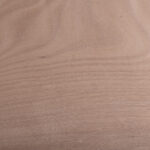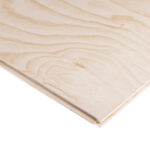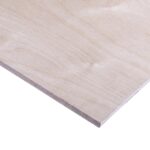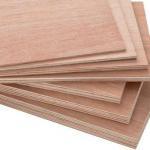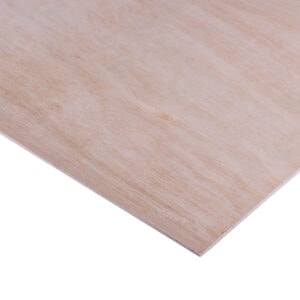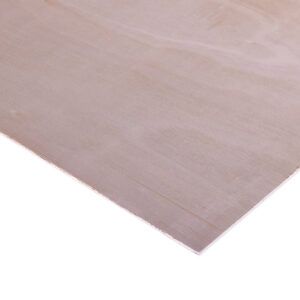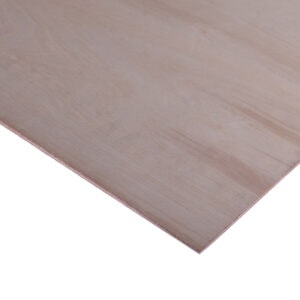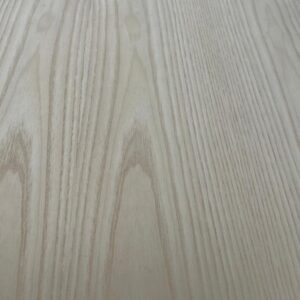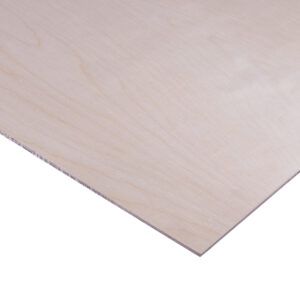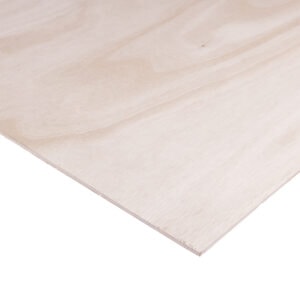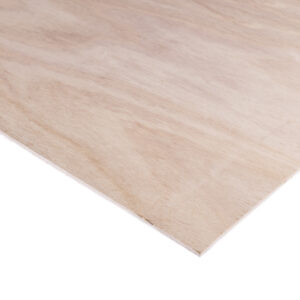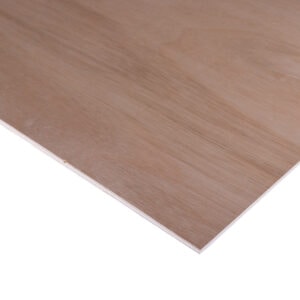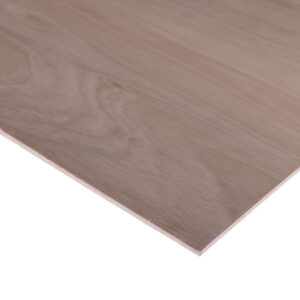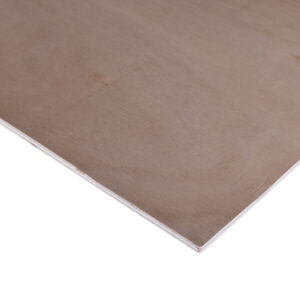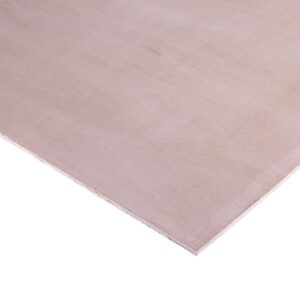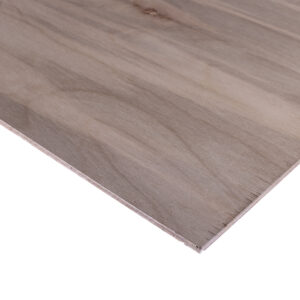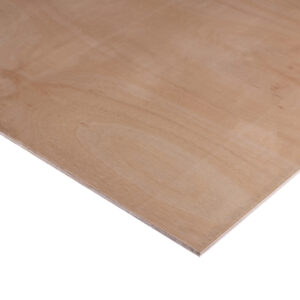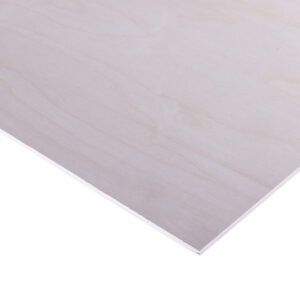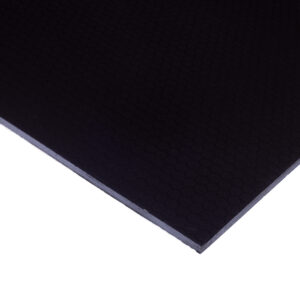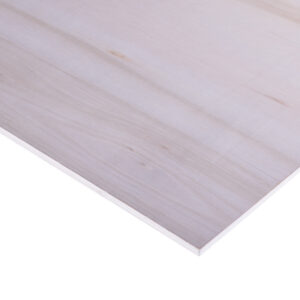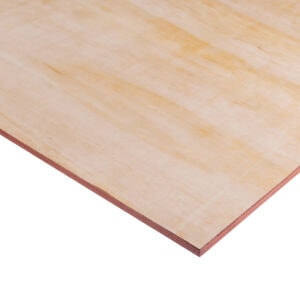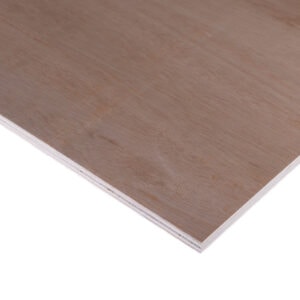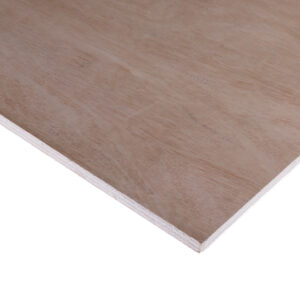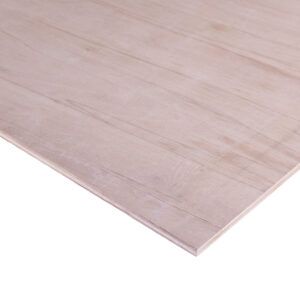Plywood
Plywood variants fall into three categories: exterior (WBP), interior (MR), and marine. Even though most people use Weather and Boil Proof or Water and Boil Proof (WBP) to describe exterior plywood, that descriptor has not been in use for some time.
Individual species’ endurance did not factor into the previous WBP standard, which only considered the adhesive type. The British Standards were amended for clarification to eliminate confusion.
An entirely exterior board would need to fulfill EN 636: Class 3, where the adhesive of EN 314-2: Class 3 is used in conjunction with a suitable biologically resistant wood species.
What is Plywood?
Plywood comprises narrow “plies” of wood veneer bonded together with the wood grain of the adjoining layers at 90 degrees from one other. A ply sheet is made by gluing wood veneers in its most basic form.
The alternated layers of plywood limit the organic movement of wood, which tends to expand and contract with moisture along the grain, leaving it more structurally stable than a standard 2×4. Because of its construction and materials, plywood doesn’t easily bend, break, crack or shrink. Three plies are the very minimum, although more are frequently preferred.
How is Plywood made?
Plywood components are constructed differently based on how they will be utilized. If plywood is used for building, it is flattened into huge, sheet form. It can be made in custom curves if it is needed for furniture, boats, airplanes, or other complex structures.
Each layer of plywood has an angled grain. This reduces the potential of shrinking while retaining the strength and longevity of the layer. The plywood is made up of at least three layers of wood that are subsequently glued together.
The front and back of the plywood are its two outer surfaces. The face is typically the visible half, while the rear is obscured from view. When 5+ plies are present, the extra internal layers are called the crossbands, while the primary layer is called the core.
Types of Plywood
Plywood variants are made to work in specific environments, so you have to know what they are made for when buying. Here are some of the most common types:
Marine Plywood
Also known as BWP or boiling waterproof plywood, it is commonplace in the boat-making industry, given its high water resistance. Marine plywood is derived from Western Larch and Douglas fir. It is not naturally water resistant and requires treatment before use in marine applications and sometimes outdoor beachside furniture.
Birch Plywood
Birch plywood is a hardwood variant made from deciduous trees of the same name. Birch plywood boards are used in various applications, including home renovations, formwork, millwork, industrial and structural work, minor construction, and underlayment.
Plywood Flooring
Plywood flooring is a form of flooring that leverages plywood board instead of other materials. Plywood flooring usually comes with regional approval stamps, improved cross-graining, a high-stress rating, higher quality bonding, preservative treatment, and specialized finishing to withstand floor stress.
Exterior Plywood
Exterior plywood is designed for outdoor use. The design gives it weather resistance, with specific or broad design adaptations for different environments. It often comes from Douglas Fir and is fused with waterproof glue to make it durable.
Interior Plywood
Interior plywood is designed for indoor use. However, that doesn’t mean it is less desirable than outdoor counterparts since you can get variants with moisture and boiling water resistance. Interior plywood can make wall paneling, partitioning, cabinets, furniture, the ceiling, floors, and more.
Phenolic Plywood
Phenolic plywood cores utilize several stacked, thin birch wood planks.
The veneer is made of birch, thick paper, and various appropriate wood types and covers the core. Its veneers are covered and soaked in a synthetic resin called phenolic, giving it the name. Given its safety, moisture protection, and durability, it is used for fixtures, floors, and furniture.
Hardwood Plywood
Hardwood plywood, as the name indicates, is constructed from hardwoods and is designed to be durable. Typically, the design has three or more layers and is created with a hardwood face and back veneer, as well as a hardwood or softwood core, before being faced and backed with a finish/veneer. It is frequently used in ornamental projects, millwork, cabinetry, and furniture construction.
Shuttering Plywood
Shuttering plywood is specially densified plywood, which gives it at least nine layers of core veneers fused under high pressure and temperature. It comes with slick film on both faces of the board since it is primarily used in construction formwork to hold cement and put up ceilings. The pattern strengthens this plywood to carry a heavy load of concrete mixes and ceilings without breaking.
Flexible Plywood
Flexible plywood has a unique structure that makes it easy to bend without breaking. The precise bending radii must be chosen based on the surface finishing required and the area of the surface to be treated. The bend forms an arc perpendicular to the grain orientation of the face and is ideal for veneering, furniture building, and ornamental reasons.
Poplar Plywood
Poplar plywood offers a broad array of uses, is adaptable, and ranks among the most preferred plywood alternatives. Furthermore, numerous coatings may be put on poplar plywood to boost resistance and lifespan while blending well with the color palettes used in your house. This is due to its ease of cutting, versatility, low weight, and sustainability.
Softwood Plywood
Softwood plywood features a softwood veneer on the back and face. Softwood plywood panels are useful for structural applications because they feature a softwood or hardwood core and a softwood veneer on the face or back.
Fire-Rated Plywood
Fire-rated plywood is a kind that has been treated to slow or significantly minimize the impact of fire. During a fire, the substances in the wood lead it to char, limiting the spread of the fire and minimizing oxidation. It is also made to last and is frequently utilized in construction owing to its unique qualities.
Formwork Plywood
Formwork is a term used to describe a plywood application. Formwork plywood, also known as shuttering plywood, MDO-faced plywood, wood veneer-faced plywood, or film-faced plywood, is a type of plywood used to cast forms, particularly with concrete mixes or when surfaces demand lightweight but sturdy outer layers.
8×4 Plywood
The “8×4” in the name refers to the size of the plywood rather than the kind. They are referring to 8-foot-by-4-foot plywood (an industry standard), which is comparable to 2440mm by 1220mm.
Large Plywood Sheets
Large plywood sheets can be purchased in bespoke sizes based on the needs of your project. Because plywood is easy to cut, it is simple to work with. The bigger sizes are available in the form of utility plywood, which may be 5 feet wide and 10 feet long.
Plywood Grades
The grade refers to the physical appearance of the plywood.
- Grade A: The sheet’s face and back are defect-free, with a clean, sanded surface and few knots. The surface is suitable for cabinets and furniture and may be stained or painted. It is designed to be seen rather than obscured by another material.
- Grade B: The sheet is sanded smooth with a few minor flaws on the face and back, some of which have been filled in with patching or wood filler. It is also cheaper than Grade A.
- Grade C: This level exhibits tight knots up to 1 1/2 inches wide that is not sanded. There may be extensive filling and patching. It is excellent for subflooring and surfaces meant to be covered up.
- Grade D: This grade is unsanded, shows several patches and filler applications, has knot holes up to 2 1/2 inches in width, and has some unrepaired flaws. Similar to Grade C, it is suitable for structural applications that won’t be visible.
When two grades are listed, such as in the example A/B, the A stands for the front and the B for the back.
EN 636: 2012 Plywood – Specifications
Class 1: Plywood for use in dry conditions. (EN 636-1) This type is best for environments with low humidity (which can occasionally reach 65%) and moisture levels in the material equivalent to 20°C. This kind of panel can be used in Class 1 of EN 335 according to ENV 1995-1-1.
Class 2: Plywood for use in humid conditions. (EN 636-2) Best for places where the humidity rises above 85% (occasionally) and the plywood’s moisture content corresponds to 20°C. These fall in class 2, as dictated by ENV 1995-1-1.
Class 3: Plywood for exterior conditions. (EN 636-3) Best for climates with greater moisture content than service class 2. These circumstances fall under ENV 1995-1-1’s service class 3 designation. It can withstand the elements and water/dampness in the intended site if it is ventilated.
9.2 Biological Durability
The plywood must be suitable for the local climate conditions. Attack risk possibility as described in EN335-3 Hazard (use) Class 3 says that in this class, if sufficient preservation treatment and/or pertinent surface and edge coating are not applied, and if the panels are not maintained or installed properly, the effectiveness of the majority of plywood will be affected.
EN 314-2: 1993 Plywood Bonding – Requirements
Class 1: Suited to dry conditions. The regular indoor atmosphere is suitable for this bonding class.
Class 2: Suited to humid conditions. This bonding class is suitable for covered exterior applications (behind cladding or beneath roof coverings) but can take brief exposure to the elements. It works for interior settings when moisture exceeds class 1.
Class 3: Suited to external conditions. This bonding class is intended for prolonged exposure to the elements.
Plywood Sheet Sizes
Plywood comes in various sheet sizes. They include:
10×5 and 10×4 plywood sheets constitute some of the biggest plywood types you can buy. They are equivalent to 3050mm x 1525mm and 3050mm x 1220mm, respectively. Based on strength, they can be used for forming walls, structural columns, and ceilings. They can also be used for walls and come from factories with ready openings cut into them.
8×4 is the industry standard plywood size. It measures 8 feet by 4 feet, the same as 2440mm by 1220mm.
Common uses of plywood sheets
Plywood is commonly used for:
- Outer wall covering
- Inside walls
- Curved, U, or folded surfaces
- Roofs
- Floors
- Furniture making
- Cabinetry
- Aviation and space shipping
- Interior games spaces
- Ship Construction
- Interior skating surfaces
Benefits of Plywood
- Plywood has a pleasant, highly manufactured look.
- It has layers for added strength.
- The design ensures durability.
- It is weight-optimized.
- It comes in a variety of sizes with custom options.
- It covers more area than regular pieces of wood.
- Plywood resists splitting better.
- It can be used for curved surfaces.
- Plywood price tags are lower.
- Plywood is environmentally friendly.
Conclusion
Plywood is one of the most adaptable engineered woods on the market. Plywood panels, produced from many layers of wood and glued together using thermal and moisture-resistant adhesives, are an essential element of many diverse building projects.
Because of its longevity and ability to withstand moisture, it is a high-quality product for many applications and extremely cost-effective for projects of all sizes.
Sheet Materials Wholesale makes it simple to purchase plywood online for your needs.
It is worth mentioning that we only sell class 3 plywood (according to the specifications described before).
-
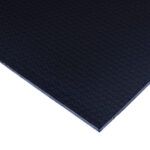
Buffalo Board (25)
-
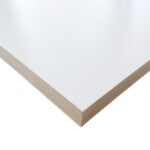
Melamine Plywood (9)
-
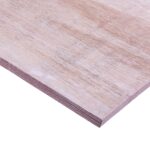
Eucalyptus Plywood (18)
-
Plywood Cut To Size (180)
-
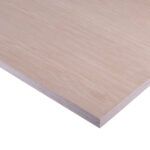
Veneered Plywood (11)
-
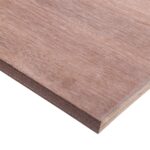
Marine Plywood (7)
-

Birch Plywood (36)
-
Plywood Flooring (18)
-
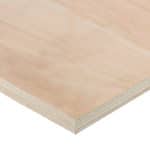
Exterior Plywood (149)
-
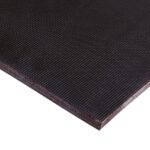
Phenolic Plywood (25)
-
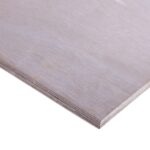
Hardwood Plywood (138)
-
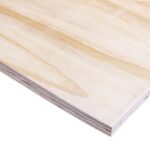
Shuttering Plywood (25)
-
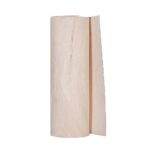
Flexible Plywood (6)
-
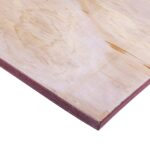
Poplar Plywood (42)
-
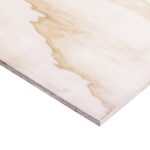
Softwood Plywood (47)
-
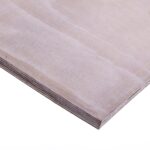
Fire Retardant Plywood (12)
-
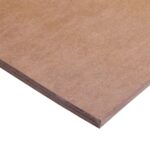
Formwork Plywood (5)
-
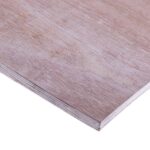
Interior Plywood (15)
-

Q Mark Plywood (9)
-

Large Plywood (20)
-
8x4 Plywood (189)
-
Plywood By Thickness (238)
Showing 1–32 of 244 results
-
3.6mm Chinese Eucalyptus Face Poplar Core External Grade Plywood B/BB CE4 2440mm x 1220mm (8′ X 4′)
Hardwood Eucalyptus faced structural plywood is used in permanent structures where the board is likely to be used in humid or interior conditions. This high-grade structural panel is less prone to bending and twisting and, with its excellent strength to weight ratio, makes it versatile and easy to handle.
Original price was: £8.85.£7.18Current price is: £7.18. £8.62 Inc VAT Add to cart -
3.6mm Chinese Hardwood Face Eucalyptus Poplar Core External Grade Plywood B/BB CE2+ 3050mm x 1220mm (10′ x 4′)
Hardwood faced structural plywood is used in permanent structures where the board is likely to be used in humid or interior conditions.
This high-grade structural panel is less prone to bending and twisting and, with its excellent strength to weight ratio, makes it versatile and easy to handle.
£18.09 £21.71 Inc VAT Add to cart -
3.6mm Chinese Hardwood Face Eucalyptus Poplar Core External Grade Plywood B/BB CE2+ 3050mm x 1525mm (10′ x 5′) Pack of 170
Hardwood faced structural plywood is used in permanent structures where the board is likely to be used in humid or interior conditions.
This high-grade structural panel is less prone to bending and twisting and, with its excellent strength to weight ratio, makes it versatile and easy to handle.
£3,188.06 £3,825.67 Inc VAT£18.75 Per Sheet Add to cart -
3.6mm Chinese Hardwood Combi Core External Grade Plywood B/BB CE2+ 2440mm x 1220mm (8′ x 4′) Pack of 250
COMBI is short for combination. Combi core is a mixture of poplar veneer and eucalyptus veneer. The combi plywood is a balance between poplar plywood and eucalyptus plywood.
£1,640.20 £1,968.24 Inc VAT£6.56 Per Sheet Add to cart -
3.6mm Malaysian Hardwood External Grade Plywood BB/CC 2440mm x 1220mm (8′ x 4′) Pack of 250
Our Malaysian structural plywood provides homeowners and merchants with a superior solution for interior and exterior applications using the highest quality tropical species. The veneers of Malaysian plywood are generally thicker than those of other plywood. The veneers of Malaysian plywood are generally thicker than those of other plywood. Remember to seal the sheets before using them externally ( i.e. exposed to weather conditions).
£2,257.92 £2,709.50 Inc VAT£9.03 Per Sheet Add to cart -
3.6mm Oak Veneered Poplar Plywood 1 Side Crown Cut A/CC 2440mm x 1220mm (8′ X 4′)
Oak poplar plywood 3.6mm glued to the wood surface increases the beauty and charm of the furniture that no other decorative panels can. This is a much stronger and more durable version of the veneered board.
£29.33 £35.20 Inc VAT Add to cart -
4mm Birch Plywood Throughout B/BB 2440mm x 1220mm (8′ x 4′) FSC®
Birch plywood is made from only Birch veneers. Inner veneers are thicker than outer veneers, glued and laid up in alternating directions to the required thickness. It thus provides a superbly consistent strong panel with known engineering characteristics.
£36.73 £44.08 Inc VAT Add to cart -
5mm Flexible Plywood Cross Grain 1220mm x 2440mm (4′ x 8′)
A cross-grain design means that the grain pattern goes across the sheet, and the short edge of the sheet bends to join with the short edge. This flexible plywood panel is commonly called bendy plywood or flexibly, and is used extensively in furniture and shopfitting, wherever curves are desirable, thus demanding a panel that is extremely flexible.
£22.28 £26.74 Inc VAT Add to cart -
5mm Flexible Plywood Long Grain 2440mm x 1220mm (8′ x 4′)
This flexible plywood panel is commonly called bendy plywood or flexibly, and is used extensively in furniture and shopfitting, wherever curves are desirable, thus demanding a panel that is extremely flexible.
£21.84 £26.21 Inc VAT Add to cart -
5.5mm Chinese Eucalyptus Face Poplar Core External Grade Plywood B/BB CE4 2440mm x 1220mm (8′ X 4′)
Hardwood Eucalyptus faced structural plywood is used in permanent structures where the board is likely to be used in humid or interior conditions. This high-grade structural panel is less prone to bending and twisting and, with its excellent strength to weight ratio, makes it versatile and easy to handle.
£8.99 £10.79 Inc VAT Add to cart -
5.5mm Chinese Hardwood Face Eucalyptus Poplar Core External Grade Plywood B/BB CE2+ 3050mm x 1220mm (10′ x 4′)
Hardwood faced structural plywood is used in permanent structures where the board is likely to be used in humid or interior conditions. This high-grade structural panel is less prone to bending and twisting and, with its excellent strength to weight ratio, makes it versatile and easy to handle.
£21.02 £25.22 Inc VAT Add to cart -
5.5mm Chinese Hardwood Face Eucalyptus Poplar Core External Grade Plywood B/BB CE2+ 3050mm x 1525mm (10′ x 5′)
Hardwood faced structural plywood is used in permanent structures where the board is likely to be used in humid or interior conditions. This high-grade structural panel is less prone to bending and twisting and, with its excellent strength to weight ratio, makes it versatile and easy to handle.
£24.50 £29.40 Inc VAT Add to cart -
5.5mm Fire Retardant Plywood Euroclass B 2440mm x 1220mm (8′ x 4′) FSC® Pack of 165
Fire retardant plywood is not suitable for structural use and is treated using chemicals that make it unable to oxidize. It makes it hard to burn. Where applied, the FRT plywood will char when on fire but will not burn. Thus, it can significantly reduce the progress of a fire.
£5,377.35 £6,452.82 Inc VAT£32.59 Per Sheet Add to cart -
5.5mm Chinese Hardwood Combi Core External Grade Plywood B/BB CE4+ 2440mm x 1220mm (8′ x 4′) Pack of 165
COMBI is short for combination. Combi core is a mixture of poplar veneer and eucalyptus veneer. The combi plywood is a balance between poplar plywood and eucalyptus plywood.
£1,452.04 £1,742.45 Inc VAT£8.80 Per Sheet Add to cart -
5.5mm Malaysian Hardwood External Grade Plywood BB/CC 2440mm x 1220mm (8′ x 4′) Pack of 165
Our Malaysian structural plywood provides homeowners and merchants with a superior solution for interior and exterior applications using the highest quality tropical species. Remember to seal the sheets before using them externally (i.e. exposed to weather conditions).
£1,986.00 £2,383.20 Inc VAT£12.04 Per Sheet Add to cart -
5.5mm CFA Approved Hardwood Flooring Underlay Plywood Eucalyptus Throughout 2440mm x 1220mm (8′ x 4′) FSC® Pack of 165
TSU-01 is a SP101 direct alternative that is CFA approved and BS 8203 meeting or exceeding many regulations. Plywood density is 585-650kg/m3 and is mainly used as flooring plywood. The veneers of this 5.5mm flooring plywood are 1.3mm thick in order to prevent blisters and weak bonds. It also is constructed of 4 veneers instead of usual 3 layers. If you are looking to save some cash with something as high-performing as SP101, this is the plywood to go for your flooring project.
£3,197.95 £3,837.54 Inc VAT£19.38 Per Sheet Add to cart -
5.5mm Eucalyptus Throughout Premium Hardwood Plywood B/BB 2440mm x 1220mm FSC®
5.5mm Chinese Eucalyptus Hardwood Plywood is a structural plywood that provides homeowners and merchants with a superior solution for interior and exterior applications using the highest quality species. Remember to seal the sheets before using them externally (i.e. exposed to weather conditions).
Original price was: £12.25.£11.34Current price is: £11.34. £13.61 Inc VAT Add to cart -
5.5mm CFA Approved Hardwood Flooring Underlay Plywood Eucalyptus Throughout 2440mm x 1220mm (8′ x 4′) FSC®
TSU-01 is a SP101 direct alternative that is CFA approved and BS 8203 meeting or exceeding many regulations. Plywood density is 585-650kg/m3 and is mainly used as flooring plywood. The veneers of this 5.5mm flooring plywood are 1.3mm thick in order to prevent blisters and weak bonds. It also is constructed of 4 veneers instead of usual 3 layers. If you are looking to save some cash with something as high-performing as SP101, this is the plywood to go for your flooring project.
Original price was: £23.24.£22.54Current price is: £22.54. £27.05 Inc VAT Add to cart -
6mm Far Eastern Marine Grade Plywood 2440mm x 1220mm (8′ x 4′) BS1088
It is excellent hardwood plywood engineered with waterproof glue. This plywood is not chemically treated; therefore, it is not resistant to rot. 6mm Marine plywood Q-mark has good grades, are robust, lightweight and defect-free.
£21.89 £26.27 Inc VAT Add to cart -
6mm Birch Plywood Throughout B/BB 2440mm x 1220mm (8′ x 4′) FSC®
Birch plywood is made from only Birch veneers. Inner veneers are thicker than outer veneers, glued and laid up in alternating directions to the required thickness. It thus provides a superbly consistent strong panel with known engineering characteristics.
£56.63 £67.96 Inc VAT Add to cart -
6mm Malaysian Hardwood External Grade Plywood BB/CC 2440mm x 1220mm (8′ x 4′) Pack of 150
Our Malaysian structural plywood provides homeowners and merchants with a superior solution for interior and exterior applications using the highest quality tropical species. Remember to seal the sheets before using them externally (i.e. exposed to weather conditions).
£1,975.68 £2,370.82 Inc VAT£13.17 Per Sheet Add to cart -
6mm Oak Veneered Poplar Plywood 1 Side Crown Cut A/CC 2440mm x 1220mm (8′ X 4′)
Oak poplar plywood 6mm glued to the wood surface increases the beauty and charm of the furniture that no other decorative panels can. This is a much stronger and more durable version of the veneered board.
£37.40 £44.88 Inc VAT Add to cart -
6.5mm Eucalyptus Core Dark Brown Hexagon Pattern Anti Slip Phenolic Faced Film Plywood 2440mm X 1220mm (8′ X 4′) FSC®
6.5mm Anti-Slip Hexagon Pattern Mesh Eucalyptus Core Phenolic Resin Hardwood Plywood is designed and manufactured especially for internal & external applications, has an anti-slip mesh pattern on one side and a smooth film face finish on the other side. 6.5mm Hexa phenolic mesh plywood sheets have been manufactured to high standards, making them resistant to corrosion and moisture. Edges of this board are sealed.
Original price was: £29.86.£27.97Current price is: £27.97. £33.56 Inc VAT Add to cart -
8mm Flexible Plywood Cross Grain 1220mm x 2440mm (4′ x 8′)
A cross-grain design means that the grain pattern goes across the sheet, and the short edge of the sheet bends to join with the short edge.
This flexible plywood panel is commonly called bendy plywood or flexibly, and is used extensively in furniture and shopfitting, wherever curves are desirable, thus demanding a panel that is extremely flexible.
Original price was: £33.27.£31.61Current price is: £31.61. £37.93 Inc VAT Add to cart -
8mm Flexible Plywood Long Grain 2440mm x 1220mm (8′ x 4′)
This flexible plywood panel is commonly called bendy plywood or flexibly, and is used extensively in furniture and shopfitting, wherever curves are desirable, thus demanding a panel that is extremely flexible.
£32.59 £39.11 Inc VAT Add to cart -
9mm Chinese Eucalyptus Face Poplar Core External Grade Plywood B/BB CE2+ 2440mm x 1220mm (8′ X 4′)
Hardwood Eucalyptus faced structural plywood is used in permanent structures where the board is likely to be used in humid or interior conditions. This high-grade structural panel is less prone to bending and twisting and, with its excellent strength to weight ratio, makes it versatile and easy to handle.
£12.78 £15.34 Inc VAT Add to cart -
9mm Radiata Pine Faced Poplar Core Softwood Plywood C+/C CE2+ 2440mm x 1220mm (8′ x 4′) FSC® Pack of 100
9mm Radiata Pine Faced Softwood plywood, or shuttering plywood, is a rough grade sheet used as an inexpensive carpentry material. This is well-suited to applications such as roofing, wall construction, or general joinery.
£1,048.00 £1,257.60 Inc VAT£10.48 Per Sheet Add to cart -
9mm Chinese Hardwood Face Eucalyptus Poplar Core External Grade Plywood B/BB CE2+ 3050mm x 1220mm (10′ x 4′)
Hardwood faced structural plywood is used in permanent structures where the board is likely to be used in humid or interior conditions. This high-grade structural panel is less prone to bending and twisting and, with its excellent strength to weight ratio, makes it versatile and easy to handle.
Original price was: £30.70.£28.89Current price is: £28.89. £34.67 Inc VAT Add to cart -
9mm Chinese Hardwood Face Eucalyptus Poplar Core External Grade Plywood B/BB CE2+ 3050mm x 1525mm (10′ x 5′)
Hardwood-faced structural plywood is used in permanent structures where the board is likely to be used in humid or interior conditions. This high-grade structural panel is less prone to bending and twisting and, with its excellent strength-to-weight ratio, makes it versatile and easy to handle.
£38.41 £46.09 Inc VAT Add to cart -
9mm Fire Retardant Plywood Euroclass B 2440mm x 1220mm (8′ x 4′) FSC®
Fire retardant plywood is not suitable for structural use and is treated using chemicals that make it unable to oxidize. It makes it hard to burn. Where applied, the FRT plywood will char when on fire but will not burn. Thus, it can significantly reduce the progress of a fire.
Original price was: £49.94.£41.69Current price is: £41.69. £50.03 Inc VAT Add to cart -
9mm Chinese Hardwood Combi Core External Grade Plywood B/BB CE2+ 2440mm x 1220mm (8′ x 4′) Pack of 100
COMBI is short for combination. Combi core is a mixture of poplar veneer and eucalyptus veneer. The combi plywood is a balance between poplar plywood and eucalyptus plywood.
£1,238.50 £1,486.20 Inc VAT£12.39 Per Sheet Add to cart -
9mm Malaysian Hardwood External Grade Plywood BB/CC 2440mm x 1220mm (8′ x 4′) Pack of 100
Our Malaysian structural plywood provides homeowners and merchants with a superior solution for interior and exterior applications using the highest quality tropical species. Remember to seal the sheets before using them externally ( i.e. exposed to weather conditions).
£1,525.35 £1,830.42 Inc VAT£15.25 Per Sheet Add to cart
